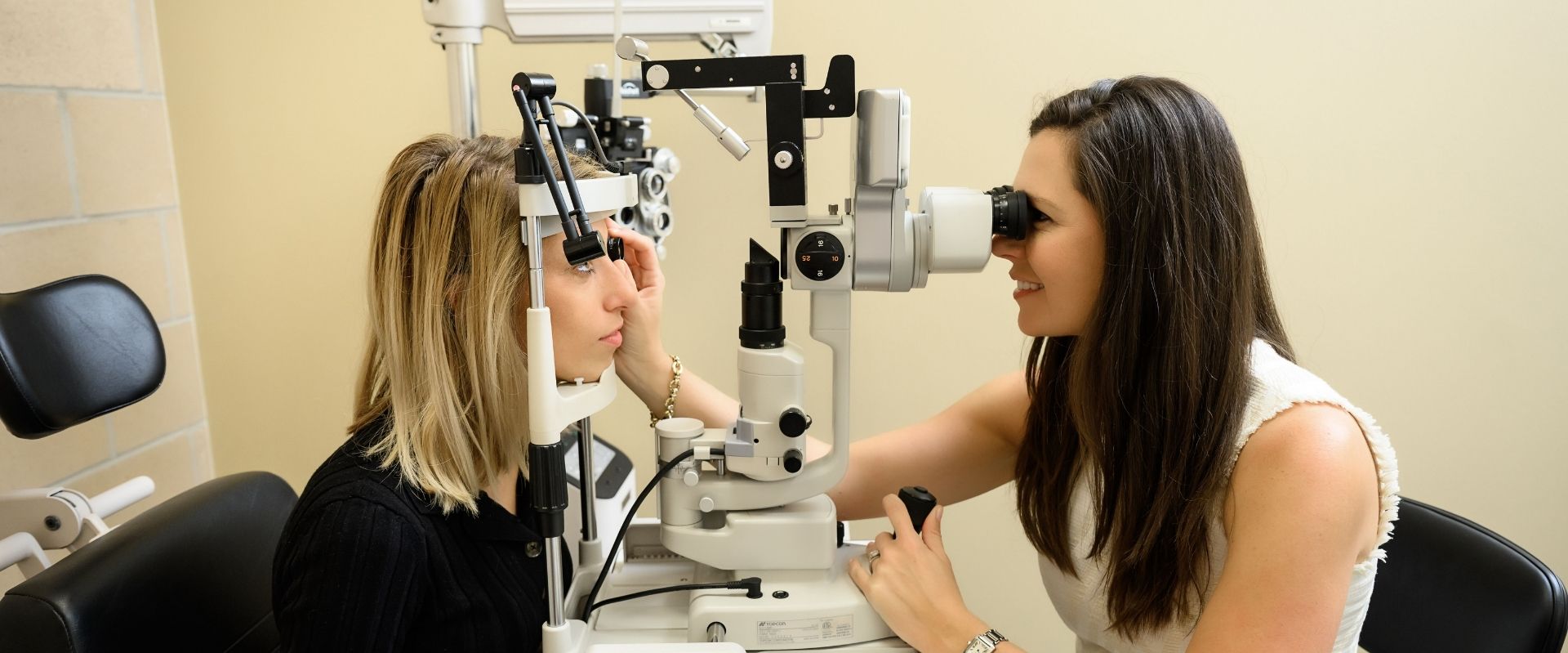Protecting Your Eyes
Over 36.5 million Americans suffer from an eye disease that can cause blindness. However, many eye diseases are preventable and even manageable. One of the biggest concerns with eye disease is failing to identify it early.
As eye disease rarely shows early symptoms, it can be difficult for patients to know there’s a problem before permanent damage has been caused. Regular eye exams are one of the most effective ways to identify eye disease early.



Early Warning Signs
Although the development of eye diseases can be hard to notice early, there are possible symptoms you might experience. If you notice any of the following symptoms, please book an appointment for an eye exam.
The following are common symptoms of eye problems:
- Eye strain
- Red eyes
- Night blindness
- Lazy eye or cross eyes
- Colorblindness
- Dry eyes
- Excess tearing
Common Eye Diseases
Eye diseases can appear in a variety of forms and display different symptoms. It’s important to be aware of the symptoms and the risk factors of the common eye diseases to the right.
Glaucoma
Glaucoma is a group of eye conditions that affect the optic nerve. It causes high pressure in your eye and can progress without showing symptoms.
As one of the leading causes of blindness in people over 60, glaucoma testing can potentially save your eyesight. An eye exam is the only way to detect glaucoma before it progresses into vision loss that can’t be repaired.
Cataracts
Almost everyone develops cataracts since its primary cause is inevitable: aging. Symptoms of cataracts include blurred or foggy vision, light sensitivity, and seeing halos around lights.
Cataracts form on the lens, which is responsible for focusing light that enters the iris. As we age, the lens becomes more rigid, and tissues harden and form clumps, causing opaque spots.
Maintain your regular checkups with the optometrist to detect cataracts and find the best treatment for your lifestyle.
Age-Related Macular Degeneration
Age-related macular degeneration (AMD) affects the macula, a tiny but crucial part of the eye in the center of the retina. Early symptoms often don’t appear, but later, symptoms of AMD can blur your central vision, making it harder to see details.
If your eyes show signs of AMD, we will keep close track of how it progresses. Scientists continue to study AMD and possible treatments, so if you struggle with this eye issue, the future could be brighter (and clearer).
Diabetic Retinopathy
Diabetic retinopathy is an eye condition that can develop among patients with diabetes (type 1 and type 2). When the bloodstream has elevated glucose levels, the blood vessels in the eyes can swell and leak into the retina.
There are 4 stages of diabetic retinopathy that increase in severity as the condition progresses. A specialized diabetic eye exam is available for patients with diabetes. Visit us to test for diabetic retinopathy, so we can detect it in its early stages before it progresses.
Identify Eye Disease Early
As eye disease is difficult to identify by its symptoms early on, it’s important to visit for regular eye exams to ensure your eyes and vision are healthy.
Find Us In Dallas

Wanna see what
we’re all about?
Our office is on the northwest corner of Prestonwood Boulevard and Beltline Road near the Panera Bread.
Our Address
- 15123 Prestonwood Blvd, Ste 120
- Dallas, TX 75248
Contact Information
- Phone: 214.253.2000
- Fax: 214-253-2478
- Email: info@visionveritaseyecare.com
Hours of Operations
- Monday: 9:00 AM – 6:00 PM
- Tuesday: 10:00 AM – 7:00 PM
- Wednesday: 9:00 AM – 6:00 PM
- Thursday: 9:00 AM – 6:00 PM
- Friday: 9:00 AM – 5:00 PM
- Saturday: Closed
- Sunday: Closed
Our Eye Care Services
Our Brands














